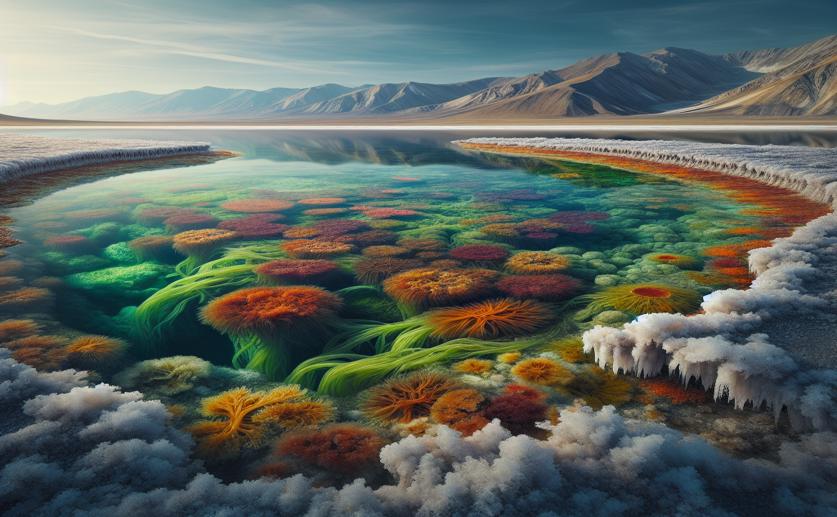
How Salt Shapes Algae Growth in a Siberian Soda Lake Over Time
Greg Howard
29th February, 2024

Image Source: Natural Science News, 2024
Key Findings
- In Siberia's Tanatar VI lake, solar activity affects water salinity and microbial life
- The lake's salinity and microbe types changed with solar cycles over 12 years
- These changes show how ecosystems adapt while maintaining overall stability
EnvironmentEcologyMarine Biology
References
Main Study
1) Salinity-induced succession of phototrophic communities in a southwestern Siberian soda lake during the solar activity cycle.
Published 29th February, 2024
https://doi.org/10.1016/j.heliyon.2024.e26120
Related Studies
2) Decadal-centennial-scale solar-linked climate variations and millennial-scale internal oscillations during the Early Cretaceous.
3) Meta-analysis shows both congruence and complementarity of DNA and eDNA metabarcoding to traditional methods for biological community assessment.
4) Ecology and biogeography of the 'marine Geitlerinema' cluster and a description of Sodalinema orleanskyi sp. nov., Sodalinema gerasimenkoae sp. nov., Sodalinema stali sp. nov. and Baaleninema simplex gen. et sp. nov. (Oscillatoriales, Cyanobacteria).
5) Methanogenesis in the Lake Elton saline aquatic system.



 25th February, 2024 | Jenn Hoskins
25th February, 2024 | Jenn Hoskins